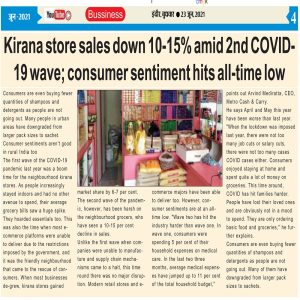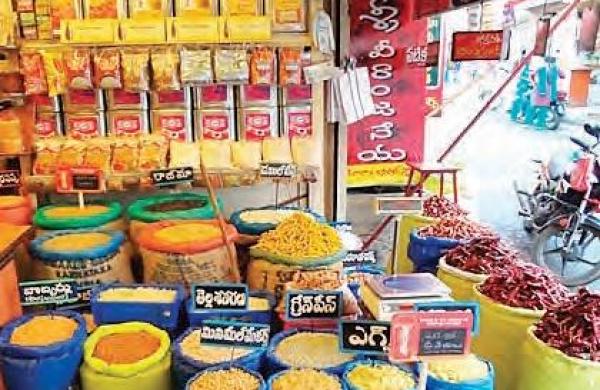The first wave of the COVID-19 pandemic last year was a boom time for the neighbourhood kirana stores. As people increasingly stayed indoors and had no other avenue to spend, their average grocery bills saw a huge spike. They hoarded essentials too. This was also the time when most e-commerce platforms were unable to deliver due to the restrictions imposed by the government, and it was the friendly neighbourhood that came to the rescue of consumers. When most businesses de-grew, kirana stores gained market share by 6-7 per cent. The second wave of the pandemic, however, has been harsh on the neighbourhood grocers, who have seen a 10-15 per cent decline in sales.
Unlike the first wave when companies were unable to manufacture and supply chain mechanisms came to a halt, this time round there was no major disruption. Modern retail stores and e-commerce majors have been able to deliver too. However, consumer sentiments are at an all-time low. “Wave two has hit the industry harder than wave one.
[expander_maker id=”1″ more=”आगे पढ़े ” less=”Read less”]
In wave one, consumers were spending 5 per cent of their household expenses on medical care. In the last two three months, average medical expenses have jumped up to 11 per cent of the total household budget,” points out Arvind Mediratta, CEO, Metro Cash & Carry.
He says April and May this year have been worse than last year. “When the lockdown was imposed last year, there were not too many job cuts or salary cuts, there were not too many cases COVID cases either. Consumers enjoyed staying at home and spent quite a lot of money on groceries. This time around, COVID has hit families harder. People have lost their loved ones and are obviously not in a mood to spend. They are only ordering basic food and groceries,” he further explains.
Consumers are even buying fewer quantities of shampoos and detergents as people are not going out. Many of them have downgraded from larger pack sizes to sachets.
[/expander_maker]



















